Luis Barreiro, Ph.D.
 Dr. Luis Barreiro is a Professor in the Department of Human Genetics at the University of Chicago. His research seeks to understand how past selection events impact present-day susceptibility or immunity to disease. His lab combines the use of cutting-edge genomic techniques with immunological and evolutionary genetic tools. In a Nature article published last year, he describes the impact of Black Death—a bubonic plague pandemic in the mid-1300s—on immune-related genes in humans. Several popular publications such as Newsweek and The New York Times highlighted this finding. Dr. Barreiro earned his PhD in Population Genetics from the University of Paris VII and a Master’s Degree in Biotechnological Engineering from Lusófona University in Lisbon, Portugal.
Dr. Luis Barreiro is a Professor in the Department of Human Genetics at the University of Chicago. His research seeks to understand how past selection events impact present-day susceptibility or immunity to disease. His lab combines the use of cutting-edge genomic techniques with immunological and evolutionary genetic tools. In a Nature article published last year, he describes the impact of Black Death—a bubonic plague pandemic in the mid-1300s—on immune-related genes in humans. Several popular publications such as Newsweek and The New York Times highlighted this finding. Dr. Barreiro earned his PhD in Population Genetics from the University of Paris VII and a Master’s Degree in Biotechnological Engineering from Lusófona University in Lisbon, Portugal.
Title: Exploring evolutionary immunogenomics: Lessons from our ancestors and past pandemics
Abstract: Infectious diseases have always been a major health problem throughout the world, imposing strong selective pressure on the human genome. Despite the recent development of vaccines and antibiotics, there are still nearly 15 million deaths every year attributable to the effects of infectious diseases. Although genetic studies of infectious diseases have identified important pathways involved in protective immunity, very little is known about the underlying genetic and evolutionary factors contributing to differences in susceptibility to infectious diseases at the population level. In this talk, I will discuss the importance of host genetic factors, natural selection, and social gradients in shaping population differences in innate immune responses to infectious agents.
Deirdre Fulton, Ph.D.
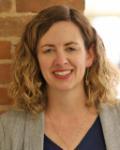 Dr. Deirdre Fulton is an Associate Professor in the Department of Religion at Baylor University. She specializes in the history of the southern Levant from the Iron Age II period through the Hellenistic period (985-37 BCE). She also uses zooarchaeology (analysis of animal remains such as bones) to elucidate human dietary, sacrificial, and economic practices in past civilizations from the Bronze Age to the Mamluk Period. She is involved in several excavations in Israel: the Leon Levy Ashkelon Excavations, Tel Shimron Excavations, and the Jezreel Valley Regional Project. Dr. Fulton earned her PhD in History and Classics and Ancient Mediterranean Studies from Pennsylvania State University, a Master’s degree in History from Miami University, and a Bachelor’s degree in Biblical Archaeology from Wheaton College (IL).
Dr. Deirdre Fulton is an Associate Professor in the Department of Religion at Baylor University. She specializes in the history of the southern Levant from the Iron Age II period through the Hellenistic period (985-37 BCE). She also uses zooarchaeology (analysis of animal remains such as bones) to elucidate human dietary, sacrificial, and economic practices in past civilizations from the Bronze Age to the Mamluk Period. She is involved in several excavations in Israel: the Leon Levy Ashkelon Excavations, Tel Shimron Excavations, and the Jezreel Valley Regional Project. Dr. Fulton earned her PhD in History and Classics and Ancient Mediterranean Studies from Pennsylvania State University, a Master’s degree in History from Miami University, and a Bachelor’s degree in Biblical Archaeology from Wheaton College (IL).
Title: Considering Cattle: The Faunal Remains from Iron I Ashkelon
Abstract: The Leon Levy Expedition to Ashkelon (1985-2016) uncovered a sizeable number of faunal remains in domestic settings, namely associated with streets, houses, and courtyards dating to the Iron I Philistine settlement and habitation of the city. The early Iron I period (ca. 1200-1100 BCE) is associated with the introduction of the Philistines to the southern coastal Levant. The rich faunal assemblage, predominately sheep, goats, cattle, and pigs, reveals patterns of consumption. In past studies, the focus of the Philistine animal economy has been on pigs due to assumptions about Philistine compared with Judean foodways. While pigs are a component of the Iron I diet at sites associated with the Philistines, they are not the staple. Indeed, the increase in cattle remains during the early Iron I relative to other periods is most significant, and there are also other distinctive faunal remains in the domestic dwellings at Ashkelon. This presentation will examine the Iron I animal economy of Ashkelon, considering the animals represented as well as stable strontium, carbon and oxygen isotopic compositions that reflect herd management practices. Ultimately, these faunal remains reveal a period of agricultural intensification dependent on the hinterland for mobility and management.
Sturt Manning, Ph.D.
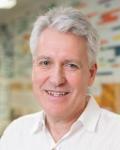 Dr. Sturt Manning is Distinguished Professor of Arts and Sciences in the Classics Department at Cornell University and Director of the Cornell Tree-Ring Laboratory. He is also an Adjunct Professor at the Cyprus Institute, a leading research institution in the Eastern Mediterranean region. His research interests focus on Mediterranean/Near Eastern archaeology and archaeological science, especially dendrochronology (tree-ring analysis), radiocarbon, and climate-related studies. Dr. Manning earned his PhD from the University of Cambridge, a Master’s degree from Macquarie University in Australia, and a Bachelor’s degree from the Australian National University.
Dr. Sturt Manning is Distinguished Professor of Arts and Sciences in the Classics Department at Cornell University and Director of the Cornell Tree-Ring Laboratory. He is also an Adjunct Professor at the Cyprus Institute, a leading research institution in the Eastern Mediterranean region. His research interests focus on Mediterranean/Near Eastern archaeology and archaeological science, especially dendrochronology (tree-ring analysis), radiocarbon, and climate-related studies. Dr. Manning earned his PhD from the University of Cambridge, a Master’s degree from Macquarie University in Australia, and a Bachelor’s degree from the Australian National University.
Title: Wood as a key source of history for the ancient Mediterranean/Near East
Abstract: Wood was a vital part of the economy and infrastructure of nearly all human societies. Incorporated in the wood of many tree species are tree rings, annual growth increments. The time-series of tree rings from many individuals of a particular tree species—living trees or trees preserved in buildings and archaeological contexts—may form long annually resolved chronologies. These chronologies yield at least two types of information. First, the tree-ring chronologies link dates of structures with archaeological or historical topics. Second, they incorporate evidence regarding the current year’s climatic / environmental conditions. Therefore, they are extraordinary archives of past climatic and environmental conditions, and they allow us to elucidate how past climate change interacted with human history. In this talk we will explore cases in which tree-ring evidence secures important dates for the Mediterranean-Near East over the last millennium and in the Bronze Age. We will consider how tree-ring evidence allows us to identify major climate episodes that likely had substantial historical relevance. Such events also act as warnings from the past towards our own time.
John Marston, Ph.D.
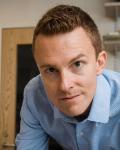 Dr. John Marston is an Associate Professor of Archaeology and Anthropology and the Director of the Archaeology Program at Boston University. An environmental archaeologist with a specialty in paleoethnobotany (the study of archaeological plant remains), he studies long-term sustainability of agriculture and land use. He links ecological theory with archaeological methods to reconstruct agricultural and land-use strategies from plant and animal remains. His current research projects include work in Turkey, Uzbekistan, Greece, and Israel (Ashkelon and Tel Shimron). Dr. Marston earned both his PhD and Master’s degrees in Archaeology from UCLA, and a Bachelor’s degree in Archaeology, Classics, and Biology from Washington University in St. Louis.
Dr. John Marston is an Associate Professor of Archaeology and Anthropology and the Director of the Archaeology Program at Boston University. An environmental archaeologist with a specialty in paleoethnobotany (the study of archaeological plant remains), he studies long-term sustainability of agriculture and land use. He links ecological theory with archaeological methods to reconstruct agricultural and land-use strategies from plant and animal remains. His current research projects include work in Turkey, Uzbekistan, Greece, and Israel (Ashkelon and Tel Shimron). Dr. Marston earned both his PhD and Master’s degrees in Archaeology from UCLA, and a Bachelor’s degree in Archaeology, Classics, and Biology from Washington University in St. Louis.
Title: Archaeobotany and Agriculture in the Ancient Levant
Abstract: Agriculture was the central activity of daily life for most individuals in pre-modern societies, even those living in early cities, and it was the primary source of wealth for both temples and palaces in most ancient states. Yet how people practiced agriculture is also determined by local landscapes and subject to climatic and ecological forces, in addition to political and economic ones. Archaeobotany, the study of plant remains from archaeological sites, allows us to reconstruct agricultural practices within their contemporary ecological contexts, and also to identify the particular strategies used by farmers, and how and why those changed over time. This presentation focuses on how individuals planned agricultural systems within the context of changing environments and political contexts, focusing in particular on two periods (the Hellenistic and Early Islamic periods) in the Levant when dramatic political changes shaped agricultural practices in unexpected ways.
Daniel Master, Ph.D.
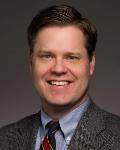 For more than twenty-five years, Dr. Daniel Master's archaeological research has been part of the Leon Levy Expedition to Ashkelon. The ancient city of Ashkelon was founded in the Stone Age and remained a major port until the end of the Crusades. This market town linked ancient highland kingdoms like Israel and Judah to lucrative Mediterranean markets. The Leon Levy Expedition has finished new excavation, and Dr. Master is working to publish the results of our many seasons of digging. Beginning in 2016, he began a new project at Tel Shimron, in Northern Israel. In cooperation with his co-Director, Dr. Mario Martin of Tel Aviv University, he is investigating the largest city in the Jezreel Valley. This excavation is sponsored by the Museum of the Bible. Once again he will be investigating the Stone Age through the Medieval Period, but this time at an inland agricultural center. He is looking forward to taking another journey through the history of the ancient world.
For more than twenty-five years, Dr. Daniel Master's archaeological research has been part of the Leon Levy Expedition to Ashkelon. The ancient city of Ashkelon was founded in the Stone Age and remained a major port until the end of the Crusades. This market town linked ancient highland kingdoms like Israel and Judah to lucrative Mediterranean markets. The Leon Levy Expedition has finished new excavation, and Dr. Master is working to publish the results of our many seasons of digging. Beginning in 2016, he began a new project at Tel Shimron, in Northern Israel. In cooperation with his co-Director, Dr. Mario Martin of Tel Aviv University, he is investigating the largest city in the Jezreel Valley. This excavation is sponsored by the Museum of the Bible. Once again he will be investigating the Stone Age through the Medieval Period, but this time at an inland agricultural center. He is looking forward to taking another journey through the history of the ancient world.
Title: Who were the Philistines: stories from their DNA
Abstract: For the last two hundred years, explorers, historians, and archaeologists have been working to understand the Philistines, the ancient people behind the biblical stories. Recent DNA research has provided new insights that answer questions about Philistine origins, Philistine life in Canaan, and even how the Philistines thought about themselves. Because of the breadth of research on the Philistines, this ancient people group provides an ideal test case for examining the intersection between genetics and social organization.
Stephen Moshier, Ph.D.
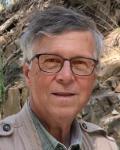 Dr. Moshier is a Professor of Geology at Wheaton College, where he also chairs the Department of Earth and Environmental Science. Much of his early research in geology involved describing and interpreting oil reservoir rocks, with published papers on oil fields in North America, the Middle East, and Southeast Asia. More recently, Dr. Moshier's research efforts are in the field of geoarchaeology, with contributions to Bronze and Iron Age excavations in Sinai, Egypt, and Israel by combining surface geology with satellite imagery to reconstruct the ancient geographic settings of the archaeological sites.
Dr. Moshier is a Professor of Geology at Wheaton College, where he also chairs the Department of Earth and Environmental Science. Much of his early research in geology involved describing and interpreting oil reservoir rocks, with published papers on oil fields in North America, the Middle East, and Southeast Asia. More recently, Dr. Moshier's research efforts are in the field of geoarchaeology, with contributions to Bronze and Iron Age excavations in Sinai, Egypt, and Israel by combining surface geology with satellite imagery to reconstruct the ancient geographic settings of the archaeological sites.
Title: Examples of Geoarchaeology in Israel and Sinai
Abstract: Geoarchaeology, a growing geoscience subdiscipline, uses geological knowledge and tools to address archaeological questions. Expedition teams typically include a geologist. On these teams, geologists identify and determine the sources of earth materials used for tools, metals, ceramics, precious stones, or building. They develop an understanding of the landscape and physical geography of a region in ancient times—a study called paleogeography. They employ geophysical tools to survey the shallow subsurface in search of buried objects and structures. Geoarchaeological projects presented in this lecture will include coastal excavations in Sinai, Egypt (Tell El Borg) and Israel (Ashkelon) and an excavation in the Jezreel Valley of northern Israel (Shimron).
GIS Demonstration
Demonstration presented by Hannah Stralow, Wheaton College '24 (Biblical Archaeology).
LiDAR Demonstration
Light detection and ranging (LiDAR) is a 3D mapping technology which utilizes light pulses to document geographic features. The LiDAR project seeks a practical method to acquire a more complete 3D record of the excavation process to be integrated into an archaeological database. This is an advancement from the conventional 2D geographic information system (GIS) data archaeologists currently employ. The speed and accuracy of LiDAR holds the promise of being able to acquire detailed datasets quickly whilst providing volumetric information.
Demonstration presented by Trevor Gilkerson, Wheaton College ‘23 (Liberal Arts-Engineering).
